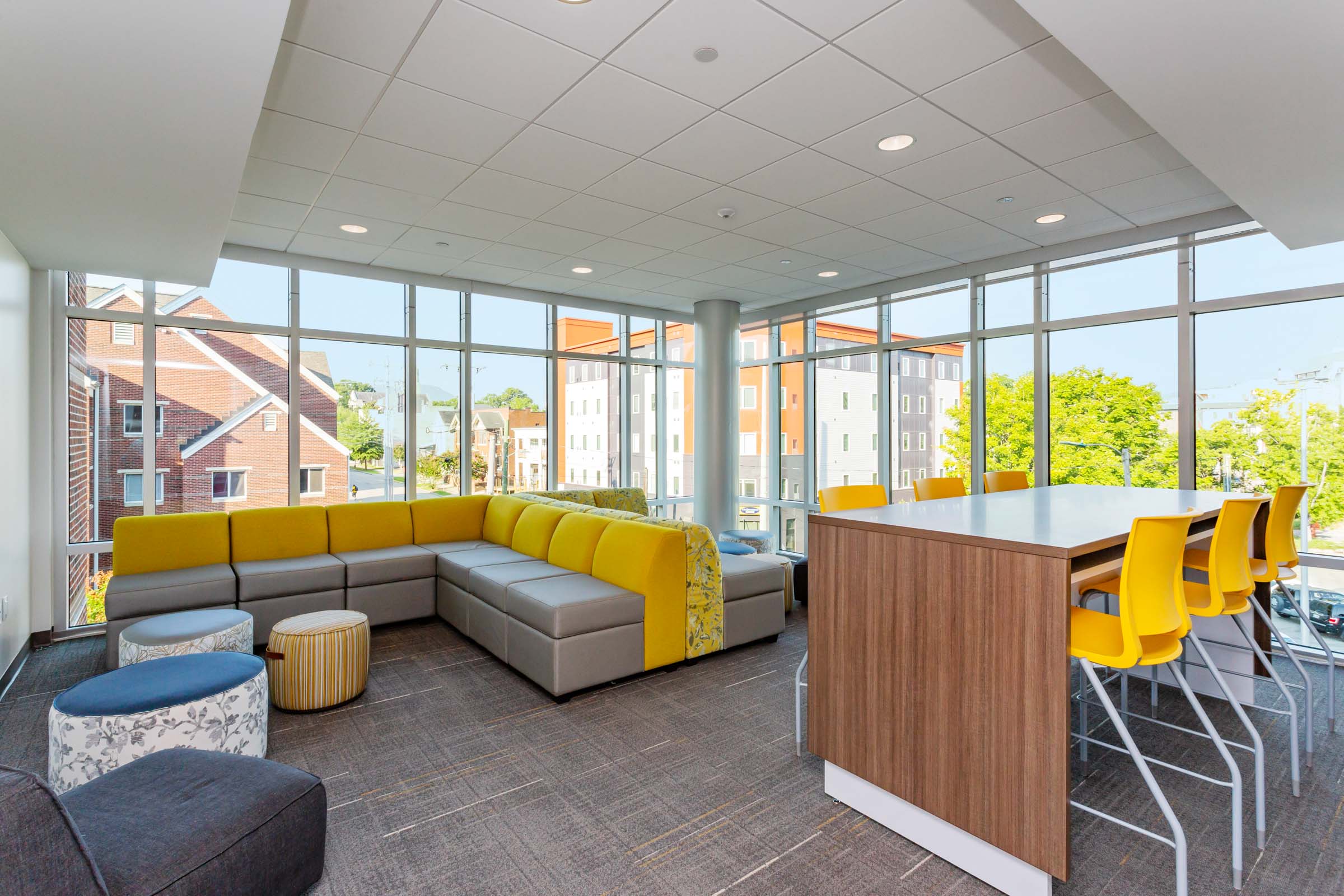
The phrase “dorm room” probably conjures up a specific memory. For me, I picture a small room with two beds, fluorescent lighting, and a communal bathroom. There’s a reason why campuses across the country have all but eliminated the word dorm from their vocabularies. Instead, prospective students are offered their choice of student housing or residence halls. Based on our experience building modern on-campus student living, these descriptions are much more appropriate. Whereas the dorms of the past were simply a place to sleep and shower, universities today offer students all-inclusive living communities. In fact, some of our most recent residence hall or student living projects have a lot in common with our luxury, multifamily projects — from high-end amenities in each room to on-site retail and restaurant spaces.
We’ve seen this trend grow stronger year after year, with newer and more customized features included in each new project. It’s because universities are constantly trying to improve the college experience and recruit students to their campus. Our higher education clients want to cater to students 24/7 and give students a reason to live on campus. They sincerely want all their students to feel included and involved in day to day college life, and the residence halls are an important tool in that mission.
Here are 4 of the latest trends we’ve seen that are shaping the way residence hall and student housing projects are being planned:
1. Focus on Health and Wellness
This focus on wellness begins as soon as you walk through the doors of modern student housing. Current designs include larger and more abundant windows throughout the building to introduce natural light and connect students with the outdoor environment. Inside the student rooms, many new residence halls include operable windows in all the rooms to increase natural ventilation. The mechanical systems, such as Variable Refrigerant Flow (VRF) technology, are often selected not only to be energy efficient but also because they offer customized control of each student’s living space. Every detail of modern higher learning residential buildings are planned with student comfort, health, and wellness in mind.
2. Amenities are Key
This trend is really where student housing projects are becoming more and more like luxury multifamily and mixed-use projects. The focus of these additions is on community and involvement. Our clients are including details and features in their student housing projects that give students a reason to come out of their rooms and interact with each other. Features like rooftop decks, large flex spaces for events and entertainment, micro retail spaces, and on-site dining and restaurants. In the newest residence hall on the University of Tennessee at Chattanooga’s campus, we built a demonstration kitchen that gives the school a space to teach students cooking skills and help them adjust to life on their own.
3. The Importance of Inclusion
Inclusion is one of, if the not the top, priority for our higher education clients. Inclusion means accessibility and consideration for the needs of every student. This means more ADA compliant rooms, accessible entrances, areas of refuge and vertical transportation. Privacy is a consideration now while planning the student rooms with individual restrooms in each room replacing central, community bathrooms. There are more common rooms filled with collaboration spaces, comfortable furniture, and media offerings throughout the building. These rooms are designed to be inviting to foster collaboration and community.
4. Minimal Maintenance
The selection of lighting and mechanical systems are made with maintenance in mind. We are seeing more LED lighting throughout buildings, and mechanical systems that don’t have to be accessed in the student rooms for repairs. Our clients want to minimize intrusion into student life. By putting more thought and consideration into the mechanical systems or lighting during the design phase, our clients are ensuring residence halls stay maintained and functional, while keeping the spaces private and comfortable for their students.
Working on an active campus always requires rigorous planning and attention to detail to ensure disturbance to student life is minimal, as was the case on our Abilene Christian University project. As students evolve and change, so do their needs for student housing. So, our higher education clients are evolving and adapting the way they plan residential projects. All of the latest trends in student housing are geared towards recruiting students and giving them a reason to want to live on campus. To see examples and learn more about work building on campuses across the country, click here.

